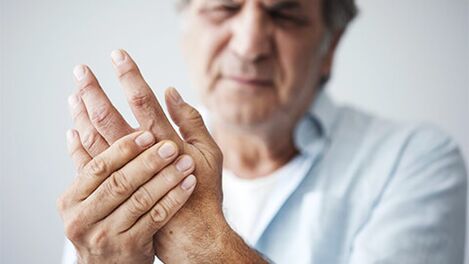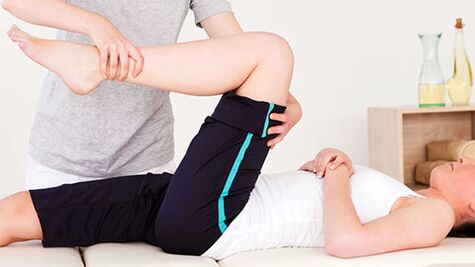
Arthrosis is a whole group of dystrophic-in-depth diseases of the joint apparatus with different etiology, but a similar clinical picture of pathological changes.The hyaline cartilage of the joint, then the drunken bone tissue, the capsule of the joints and the ligamentary apparatus, are exposed to destruction and deformation.The disease is chronic progressive and without proper treatment can significantly limit the patient's motor activity.
The diagnosis and treatment of the pathology are engaged with an arthrologist, rheumatologist, surgeon, orthopedist.
General information
Arthrosis is diagnosed in approximately 1/5 of the planet's population, but the disease is more characteristic of the elderly.This proves the statistics of its distribution between different ages:
- Young people up to 40 years-more than 6-7 %;
- Mature persons after 45 years to 20-25%;
- After 70 years - up to 80%.
The disease affects the tissues that are under constant load: small joints of the hands and plus of the legs, hip and knee joints, areas in the cervix and thoracic spine, slightly lower the ankle and shoulder joint.
Note! The lesion of the interfalancing joints of the hands in women occurs 10 times more often than in men.
In many western countries, the term "arthrosis" is not used, replacing it with the concept of "arthritis".Such replacement is quite justified, since inflammatory processes in most cases precede arthrosis or accompany it.In home medicine, the terms "arthrosis" and "arthritis" essentially mean the same disease, but with different etiology of the process.In addition, the concepts of osteoarthritis, osteoarthrosis, deformation of osteoarthrosis are used to indicate pathology.
Note! The difference between arthritis and arthrosis lies in the cause of the disease.In the first case, these are inflammatory processes (suffix -this means inflammation), in the second -metabolic disorders (protein, mineral).
The mechanism of development and the causes of arthrosis
The main cause of arthrosis is a violation of equilibrium in the processes of anabolism and catabolism of cartilage and bone tissues.If the synthesis processes are normally prevalent, then during Arthrose changes, the processes of destruction go faster.As a result, rapid aging and degeneration of tissue structures are observed.They begin to collapse first at the cellular level, then in the organ-tone.The first destructive changes appear:
- clumping of cartilage;
- surface storage;
- micro -cracks and tears;
- The focal and general thinning of the cartilage layer.
Cartilage loses natural elasticity and density and is no longer able to serve as a shock absorber during movements.The mutual correspondence of the shape of the joint surfaces is impaired, leading to a deformation of the connection.This exacerbates the development of pathological changes and triggers a number of irreversible processes.In exchange for the lost cartilage, bone tissue begins to grow with the formation of spikes and growths, which move and can subsequently lead to severe damage to the patient.
Reasons for this scenario:
- Mineral metabolism disorders are able to lead to gout changes in the joints, osteoporosis, etc.
- The disadvantage of tissue nutrition is venous stagnation and poor microcirculation slows blood supply and lymphatic drainage.The mineral composition of the bone is exhausted, it becomes osteoporic and loses the ability to commit suicide.The phenomenon is characteristic of lack of movement, with vascular pathologies, hormonal damage.
- Inflammatory processes - a consequence of acute infectious diseases, body hypothermia, impaired hormonal origin.
- Autoimmune reactions are chronic foci of inflammation, nervous stress, endocrine pathologies and other causes can cause aggression of the body's immune system against its own cells, including joint tissues.The most common autoimmune lesions with rheumatoid arthritis, scleroderma and red lupus.
- Increased joint wear - a mismatch between functionality and the loaded load slows the processes of synthesis and accelerates destruction.The phenomenon is characteristic of athletes, dancers, overweight people, as well as for all who are engaged in heavy physical labor or are associated with long static stress (standing work).
- Injuries - bruises, dislocations, fractures, penetrating wounds, tears - disturb the structure of the tissues and give impetus at the beginning of the deformation.
- Genetically defined pathologies - connective tissue dysplasia, disorder of collagen synthesis initially form an unstable, low functional joint.
Some reasons are close to each other and form a complex pathological complex.
Warning! Hormonal abnormalities play a particularly important role in disorders of bone metabolism.Thyroid failure, menopause, contraceptives, corticosteroids - all this is a direct path to osteoporic and arthrosis in the skeleton.
Classification of Changes
In the arthrosis systematics, several determining criteria are used: causes and etiology, localization, area of coverage.
Through etiology:
- Primary arthrosis - develop independently, with damage to completely healthy joints, without the participation of previous pathologies;
- The secondary was formed against the background of the disease (gout, psoriasis, rheumatism), as well as in the presence of existing joint deformities or injuries.
By the degree of coverage:
- Local forms-damage to a limited number of joints: monoarthrosis-1 stall, oligoarthritis-2-3;
- Summary forms are different types of polyarthrosis when 3 large structures and more participate in the pathological process.
According to the location of the process, the names of the arthrosis of each joint are given:
- Coksartrosis - deactivates the hip joint;
- Spondylartrosis - affects the intervertebral discs, mainly cervical, thoracic and lumbar;
- gonarthrosis - with impaired work of the knee joint;one of the most common species;
- Cruzarthrosis - with the participation in the pathological process of the ankle.
Arthrosis can be rapid or slowly progressive, compensated or decompensated.
The main symptoms and signs
Arthrosis is a complex disease.Conventionally, it can be divided into several pathologies united with each other:
- Chondritis and chondrosis - inflammatory and degenerative lesion of cartilage tissue;
- Osteoporosis is also osteoporosis - a pathological process in bone structures;
- Synovitis - the involvement of the mucous membrane of the joint capsule;
- Bursit - general inflammation of the joint bag;
- Reactive damage to the soft tissues in the adjacent area - affects the muscles, connections, fiber.

Depending on the scene, degree and shape, they are observed at the same time or selectively.With this in mind, a complex of symptomatic changes is formed.Among them:
- Pokhrutzhazing is a symptom of impaired mineral metabolism and the first sign of the disease.It can occur at any age.
- Stock - Intensely manifests itself in the morning.It is short -term and can be expressed by the effect of jamming the joint.
- Mobility Restriction - Reducing the amplitude of movements when performing active or passive actions.
- Pain is a different manifestation, starting with unpleasant and pain, which, after intense loads, becomes the background and ends with sharp movements with acute when performed.So -Called "initial pain" are particularly characteristic, which manifests after a long rest period and continue until the joint is fully developed.
- Swelling - with inflammation of the soft tissues, synovitis, bursitis.
- Deformation - is observed with complete degeneration of cartilage and lack of coefficient of shock -absorbing factor.
Note! Bushra and Heberdon nodes are a characteristic sign of deformation of arthrosis of the hands.They are bone growths with osteophyte processes.
Stages and degree of arthrosis
With regard to the intensity of changes in arthrosis, 4 stages of the disease are distinguished:
- Stage 1 - with slight re -pouring of cartilage (impaired structure and functionality in collagen fibers).In X -ray, the picture is not practically visible.
- Stage 2 - The sting of cartilage tissue in the lumen of the joint is up to 50%.It is covered with cracks, slight pain occurs in the area of the damaged compound.Osteophytic complexes appear on X -ray;The joint gap slightly reduces its size.
- Stage 3 - the cartilage lesion almost reaches the bone base, the gap of the joints decreases sharply.
- 4 stages - the cartilage is completely damaged, leading to partial or complete degeneration of the synovial fluid, abrasion of the bone tissue for each other and deformation of the joint.In some areas, changes in sclerosis develop.The extreme manifestation of arthrosis is the fusion of joint tissues with the ossification of structures and complete loss of mobility.
In some sources, stage 1 and 2 are combined into one.
With the progress of symptoms, a person's motor activity suffers.Given the disorders of the functional indicators of the joint, 4 degrees are distinguished for the possible development of the pathology:
- 0 degrees - mobility and efficiency are fully preserved;
- 1st degree - the patient retains the ability to self -care and exhibit social activity, but is not able to engage in employment;
- 2 degrees - the difficulties in manifestation of social activity are added to a violation of work;
- 3 degrees - all types of activities are limited or completely impossible: labor, social and independent service;The patient needs constant care.
What are the possible complications
By tightening treatment, you can provoke a number of unpleasant consequences:
- Constant pain syndrome;
- lame;
- vertebrate animals (with spondylarrosis);
- pronounced deformity of the joints;
- Complete immobility with the ossification of structures.
What does the study procedure include
A medical examination is sufficient for the diagnosis of arthrosis with the collection of anamnesis.In order to determine the degree of damage, an instrumental examination is performed.The main ways to get a clear picture of the disease:
- Radiography;
- CT, MRI;
- ultrasonography;
- scintigraphy;
- Diagnostic arthroscopy with a biopsy of cartilage tissue and synovial fluid.
In an acute inflammatory process, the doctor prescribes additional analyzes: general blood test, rhubarb, biochemistry (glucose level, protein compounds, electrolytes).
Treatment
It is impossible to completely eliminate the disease.Timely treatment of arthrosis allows you to maintain joint functionality, normal motor activity and to prevent pain.In order to exclude complications, it must start in the first stage.
Drug therapy Includes:
- anti -inflammatory drugs, mainly NSAIDs;
- Intra -articular steroid blocks of pain and inflammation (with pronounced synovitis, bursitis);
- Proteolysis inhibitors - slowing and suspending the process of bone destruction and cartilage;
- Antipasmodics - preventing muscle cramps;
- Angioprotectors and medicines to improve blood microcirculation in the affected tissues;
- chondroprotectors;
- Synthetic substitutes for synovial fluid;
- Vitamin and mineral compositions.

Physiotherapy prescribed in parallel to enhance the effect of medication.The main physiotherapy:
- magnetotherapy;
- electrophoresis;
- UHF;
- mud;
- Baths;
- massage;
- Exercise and kinesiotherapy therapy using special simulators.
Surgery - The only way to treat the short stages when cartilage tissue is completely destroyed.The following solutions to the problem are possible:
- Endoscopy - with partial or complete replacement of the joint through an artificial analogue;
- Arthroscopy - minimally invasive surgery to remove osteophytes or partial replacement of cartilage;
- Arthrodesis - closing the joint and fixing it in the most convenient position;Without the fixed joints of the joints, they grow over time.
Forecast
Arthrosis does not threaten the patient's life, but lack of treatment can significantly limit freedom of movement and impair quality of life.Timely and competent therapy in the early stages can restore the joint in health.In other cases, only delay in the process of degeneration is possible with the help of conservative treatment and compensation for lost functions due to dentures.
Prevention
Therefore, complete recovery is almost impossible, therefore the prevention of special attention should be paid.The basic requirement is a healthy lifestyle and complete treatment of inflammatory processes:
- Do not allow hypothermia in a timely manner and treat infectious diseases;
- Avoid physical overload and long static loads;
- maintain normal body weight;
- Stick to the proper diet-balanced composition of vitamins and minerals is very important for the health of the musculoskeletal system;
- Completely (if possible, until full recovery), treat any joint damage;
- Practice systematic exercise to stimulate blood circulation (bicycle, tourism, light jogging, Scandinavian walking).
If you are at risk (adult age, poor heredity, physical overload), be sure to undergo a regular radiographic examination.






















